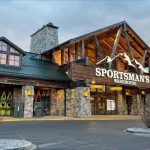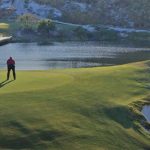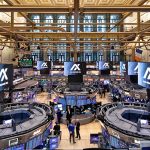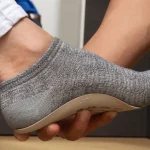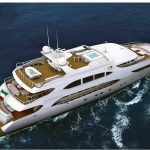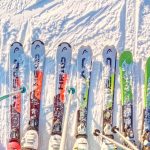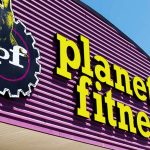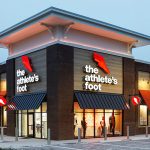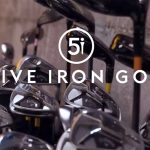The National Sporting Goods Association reported last week that their most recent survey of consumer households indicated that retail sales of athletic footwear rose 9.8% for the six-month period from October 2005 through March 2006. NSGA estimated that the total sales for the period were $6.08 billion versus $5.53 billion for the same period the previous year, while unit sales rose 7.4% indicating a continued increase in average selling prices. The retailer/dealer trade association also estimated that sales for the full-year period would surpass the $17 billion mark.
Unfortunately, the market appears to have lost the momentum measured during the period covered in the NSGA survey. Based on the assessment of 2006 first half point-of-sales data figures compiled by SportsScanINFO and a survey of retailers and manufacturers conducted by The SportsOneSource Group, total retail sales of athletic footwear grew in the low-single-digits for the period from February 2006 through July 2006, reflecting a mid-single-digit increase in the first quarter and a very-low-single-digit decline in the second quarter.
Based on the estimates from The SportsOneSource Group, total retail sales of footwear grew just 2.4% to $8.15 billion in the first half of 2006 from $7.96 billion in the year-ago period.
The good news is that first half average selling prices grew in the mid-singles to roughly $38.23 per pair at retail, compared to $36.30 per pair in the 2005 first half period. Average selling prices were up the most in the Outdoor, Cleated, Sandals, and Fashion Athletic categories, which each posted ASP gains in the mid- to high-single-digit range, while Classics and Walking both saw ASPs decline in the first half.
Contrary to speculation by some that better product and performance product is under pressure, the first half point-of-sale data compiled by SportScanINFO indicates that the top-end of the market saw the most growth, thanks to very strong sales of $100+ footwear in the first quarter. Unit and dollar sales of product retailing for more than $90 were both up around 80% for the first half, although the growth trend has slowed since the first half. First quarter unit sales of the upper-end were up nearly four-fold and are still delivering double-digit growth in the second quarter.
Nike and Asics were the primary beneficiaries here, but Under Armours entry into the Cleated business added some upside as well.
While Basketball and Cross-Training did post declines that negatively impacted the Performance Footwear business, the sector still posted a low- to mid-single-digit gain for the first half due to double-digit increases in the Running and Cleated categories.
Still, the most growth came out of the Casual sector, with the biggest increases for the first half posted in Fashion Athletic, Skate, and Sandals. There is strong anecdotal evidence, backed up by the numbers, that these are the categories seeing the most benefit from the strong double-digit decline in Classics in H1.
While declines in Basketball moderated in the second quarter when compared to the first quarter, Classics, Walking, and Cross-Training all saw their declines increase as the half progressed.
Womens growth outpaces the average
While the womens business has been the focus of much of the negative reports coming out of the mall, the business here actually grew faster than the mens business in the first half by nearly a three-to-one ratio. Still, ASP growth in mens outpaced womens by the same ratio.
The Apparel business saw both bad news and good news in the retail first half through July as unit and dollar sales both declined in the low-teens, but the sector also posted an increase in average selling prices for the period. The Branded Apparel and Licensed Apparel businesses tracked by SportScanINFO have clearly been impacted by retailers continued move to private label, but the sector is also benefiting from the move to Performance Apparel over the last year.
The consumer is certainly responsible for the ASP increase as they opt for more premium product on the branded side, while many of the mid- to lower-tier brands see pressure from the move to private label. It is interesting to note that while the Branded Apparel business has experienced a low-teens decline in the first half, the business is actually up at the same rate in the sporting goods and internet/catalog channels. The mall also saw a low-single-digit increase for the period.
That leaves the mid-tier and discount/mass channels as the culprits for the decline in the business, which may be a direct result of the allocated nature of most Performance Apparel and the fact that many of the key growth brands in the sector dont sell to these channels.
The big change for Performance Apparel was the shift in focus from primarily a Compression story to one that saw strong gains in loose-fitting goods this spring and summer. The consumer has clearly decided to move away from basic goods. Nowhere was this more evident than in T-Shirts in the first half, where Performance Ts saw sales jump more than 40% for the period as Non-Performance Ts posted a decline in the high-teens. The Performance product is defined in the SportScanINFO data as that product which offers some type of moisture-management or other technical attributes.
The overall Headwear business was down in the low-single-digits for the first half, but strength in the Licensed Headwear side nearly offset the high-single-digit decline in the Branded Headwear business.
Unlike the Branded Apparel business, the Licensed Apparel business did see growth in the mid-tier, but saw a double-digit decrease in the mall as the fashion end of that business continues to degrade.
The continued popularity of Licensed Headwear stayed in positive territory in the mall, but the declines in Jersey sales, which were down more than 20%, far outweighed the upside in Caps.
Based on POS data compiled from the retailers reporting to SportScanINFO, total Licensed Apparel sales were down in the low-single-digits for the first half. Excluding the Licensed Headwear category, the rest of the Licensed Apparel business was down in low- to mid-singles. Headwear made up nearly a third of total Licensed Apparel sales for the period.
Licensed Headwear sales accelerated in the second quarter, growing in the mid- to high-single-digits after posting a double-digit decline in the first quarter. Unfortunately, the category has fallen back into its Q1 trend in the first month of the fiscal retail third quarter.
The NBA saw the most pressure across the board, declining nearly 50% in the first half through July. MLB posted an increase in the low-teens and the NFL saw sales increase in the low-20s for the period. A very sharp increase in the NHL business was directly related to the fact that the league actually played in 2006 versus the lockout season in 2005.





